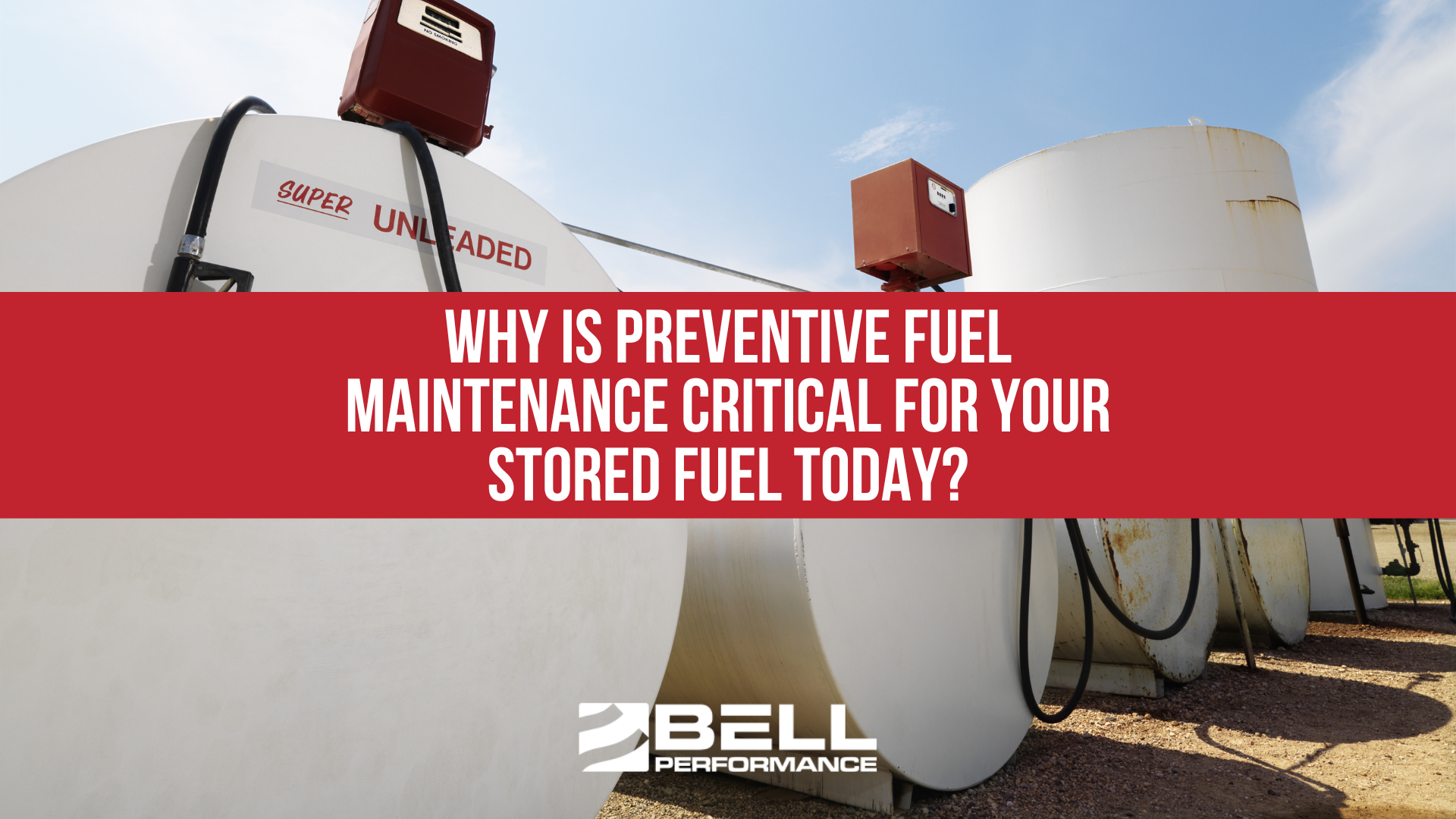Why Is Preventive Fuel Maintenance Critical for Your Stored Fuel Today?
The concept of preventive maintenance isn't new—we see it everywhere in our daily lives. You change your car's oil before it breaks down. You...
2 min read
Erik Bjornstad : Aug 13 2025

Fleet managers and fuel service professionals know the sinking feeling when they spot it—that telltale black sludge coating tank walls or clogging filters. That's when the uncertainty starts - is (what looks like) a minor maintenance annoyance going to escalate into costly equipment failures, unexpected downtime, and emergency fuel replacement scenarios that nobody budgets for.
That black sludge comes from fuel degradation. And the reality is that fuel degradation has accelerated dramatically in recent years. Modern fuel formulations face challenges that didn't exist a decade ago, and storage conditions that once seemed adequate now create perfect storms for contamination.
Temperature fluctuations wreak havoc on stored fuel in ways that catch many operations off guard. When fuel temperatures climb—whether from ambient heat, underground tank conditions, or proximity to equipment—chemical breakdown accelerates exponentially. Fuel that tested clean in spring can show significant degradation markers by midsummer.
The chemical reactions driving fuel breakdown are driven by heat and are essentially cooking your stored inventory from the inside out. Oxidation chains multiply rapidly under heat stress, breaking down fuel molecules into the black, gummy deposits that coat your tanks and infiltrate your fuel systems.
Biodiesel blends bring their own complications to fuel storage management. While these blends offer environmental benefits, they're significantly more prone to microbial growth and water absorption than conventional diesel. The biological components in biodiesel blends actually feed microbial colonies, creating ideal breeding conditions for the bacteria and fungi that produce black biomass.
You might think that the small amount of bio (2-5%) found in most diesel wouldn't be a big deal. Yet, even small biodiesel percentages can shift the entire contamination profile of your stored fuel. Operations that successfully managed straight diesel storage for years suddenly find themselves dealing with recurring microbial issues and accelerated fuel degradation once biodiesel enters their supply chain.
Standard fuel stabilization approaches work well for routine applications, but critical use tanks demand a different strategy entirely. Emergency generators, fire suppression systems, hospital backup power, and essential fleet vehicles can't afford fuel failure when they're needed most.
For these critical applications, the stakes justify a more aggressive approach. Double-dosing stabilizer treatments—using twice the standard concentration—provides enhanced protection against the accelerated degradation that occurs in high-stress storage environments. Hot, humid climates particularly benefit from this intensified strategy, where temperature and moisture create the perfect conditions for rapid fuel breakdown.
Bell Performance's SDF Tank Treatment addresses multiple degradation pathways simultaneously. Rather than just preventing future problems, it actively breaks up existing petroleum sludge while dispersing microbial biomass that standard treatments leave behind. The corrosion protection component becomes especially critical in tanks that see infrequent turnover, where metal surfaces face prolonged exposure to contaminated fuel.
The most cost-effective approach treats fuel degradation as a preventable maintenance issue rather than an emergency repair scenario. Adding SDF Tank Treatment with each fuel delivery—at the standard 1:10,000 ratio for routine applications—creates ongoing protection against sludge formation and biomass accumulation.
But critical infrastructure can't rely on standard protocols. These systems need the insurance policy that double-dosing provides, particularly in challenging environmental conditions where failure isn't just inconvenient—it's potentially catastrophic.
The black sludge you're seeing today represents fuel breakdown that started weeks or months ago. The question isn't whether to address it, but whether you'll handle it as planned maintenance or emergency crisis management. One approach costs significantly less than the other.
For operations managing critical fuel storage or dealing with recurring contamination issues, the enhanced protection strategy makes financial sense. The cost of preventive treatment pales in comparison to emergency fuel replacement, equipment repairs, and the operational disruptions that follow fuel system failures.
Your fuel storage strategy should match the criticality of your operation. Standard approaches work for standard risks, but critical infrastructure demands critical-level protection.

The concept of preventive maintenance isn't new—we see it everywhere in our daily lives. You change your car's oil before it breaks down. You...
One of our most popular webinars from the past dealt with such an important issue - Diesel Fuel Storage Tank Corrosion - that we thought it was...
No business makes decisions in a vacuum. Context is everything. Decisions to spend money within the organization are (or should be) based on the...